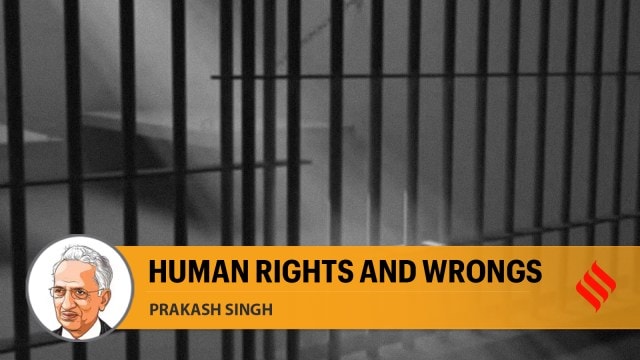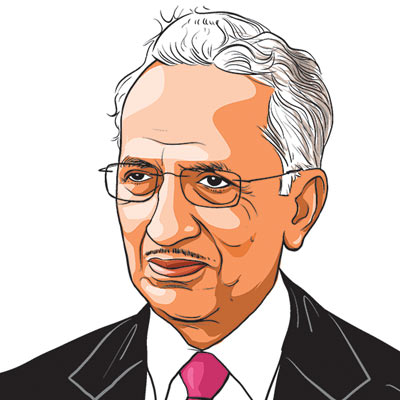Opinion Torture in police custody continues to plague India’s justice system
India must enact a law against torture, ratify the UN Convention, and take effective steps to insulate the police from external pressures as mandated by the Supreme Court
 Kharade and Shaikh started beating up Thorat. In the attack, Thorat sustained injuries to his chest, ribs and nose.
Kharade and Shaikh started beating up Thorat. In the attack, Thorat sustained injuries to his chest, ribs and nose. Common Cause, a reputed NGO, in collaboration with the Lokniti Programme of the Centre for the Study of Developing Societies (CSDS), released a comprehensive report on police torture and (un)accountability on March 26. It explores the nature, causes and factors that contribute to the perpetuation of police violence and torture in India. The study is based on interactions with 8,276 police personnel of different ranks across 17 states and union territories. The findings of the study bring out some very disturbing features. There are, however, some redeeming features as well.
Torture has been defined in the UN Convention (1984) as “any act by which severe pain or suffering, whether physical or mental, is intentionally inflicted on a person for such purposes as obtaining from him or a third person information or a confession, punishing him for an act he or a third person has committed or is suspected of having committed, or intimidating or coercing him or a third person, or for any reason based on discrimination of any kind when such pain or suffering is inflicted by or at the instigation of or with the consent or acquiescence of a public official or other person acting in an official capacity.” India signed the UN Convention against Torture (UNCAT) in 1997 but has not ratified it, which means it is legally not binding on India.
The report brings out that 20 per cent of the police personnel feel that it is “very important” for the police to use “tough methods” to create fear amongst the public and another 35 per cent think it is “somewhat important.” In other words, 55 per cent of police personnel favour tough methods to some degree. Significantly, they have not talked of torture. What these tough methods are and at what stage they assume the dimensions of torture have not been clarified in the report.
In cases involving sexual harassment and child lifting, one in four police personnel justify mob violence, implying that they do not mind mobs acting as the judge, jury and executioner in such cases. Another disturbing finding is that 22 per cent of police personnel believe that killing “dangerous criminals” is better than giving them a legal trial. But, it is also a fact that 74 per cent police personnel are of the view that “no matter how dangerous a criminal is, the police should try to catch them and try to follow proper legal procedures.” In matters of arrest, although 41 per cent police personnel said that the procedures are “always” adhered to, 24 per cent said that they are “rarely or never” adhered to. Kerala, where 94 per cent said “always”, reported the highest compliance.
On the use of third-degree methods, 30 per cent of police personnel said that these are justified towards the accused in serious criminal cases. Surprisingly, 9 per cent justified these methods even in petty offences. The victims of torture are, unfortunately, mostly from poor and marginalised communities. The groups generally targeted are Adivasis, Dalits and Muslims, people who cannot read and write, and slum dwellers.
Custodial deaths showed discrepancies in figures furnished by different agencies. Thus, in the year 2020, the National Crime Records Bureau (NCRB) reported 76 cases, while the National Human Rights Commission reported 70 cases. The National Campaign Against Torture (NCAT), a civil society initiative, documented 111 cases. It was a shocking revelation that during 2018-22 there were zero convictions for deaths in police custody.
An encouraging part of the report is where the researchers found that an overwhelming 79 per cent of police personnel favour training in human rights, 71 per cent recommended prevention of torture and 79 per cent supported evidence-based interrogation techniques.
The report says that there was consensus among lawyers and judges that confessions to the police should never be made inadmissible. It is worthwhile placing on the record that the Malimath Committee had suggested that confessions made before a senior police officer of the rank of Superintendent or above should be admissible in evidence with safeguards to prevent coercion. The Law Commission of India had also, in its 69th Report (1977), proposed introducing Section 26A in the Indian Evidence Act to make confessions before senior police officers admissible.
The study included in-depth interviews with doctors, lawyers and judges also whose jobs involve interacting with the police and those in custody. It was “very rare” to see magistrates interacting with arrested persons. In fact, one lawyer described magistrates as “silent spectators” who “do not record anything or ask where and when they were arrested.” The doctors pointed out that medical examinations of arrested persons were often done by doctors without expertise in forensic medicine; there were instances of such examinations being done by an eye specialist or anesthesiologist.
The study, in fact, found fault with all the concerned agencies for incidents of torture. The police are, of course, the main culprit. The magistrates contribute by playing a passive role; the doctors by not deputing specialists who could identify signs of torture. The National Human Rights Commission has been criticised for not defining torture and for its “coloured attitude” towards the victims of torture.
A serious lacuna in the report is that it has not made any observations on the factors that contribute to the use of torture in the Indian context. Very briefly, these are: A continuation of the colonial police culture, for which there is no justification, the near absence of accountability, pressure from the political masters and even senior officers for quick results, inadequate training, and public support for short-cut solutions because of the failure of the criminal justice system to deliver within a time-frame.
most read
Torture is, sadly, practised by police forces across the world. The most sophisticated and brutal techniques are used by the police in the US. Guantanamo Bay gained worldwide notoriety for its inhuman treatment of detenus. Iraq’s Abu Ghraib prison highlighted the brutal methods used in the interrogation of terror suspects. About Russia, China and Pakistan, the less said, the better.
This is, however, not to justify the use of torture under any circumstances. India must enact a law against torture, ratify the UN Convention, and take effective steps to insulate the police from external pressures as mandated by the Supreme Court. Such measures will lead to police becoming humane and professional, upholding the rule of law, respecting human rights and winning over the trust and confidence of the people.
The writer, a retired Police Chief, has been campaigning for police reforms for nearly three decades





